Automated Data Labeling
Automate Your Data Engine
Streamline your labeling tasks with AI-powered automation and efficient human review workflows.
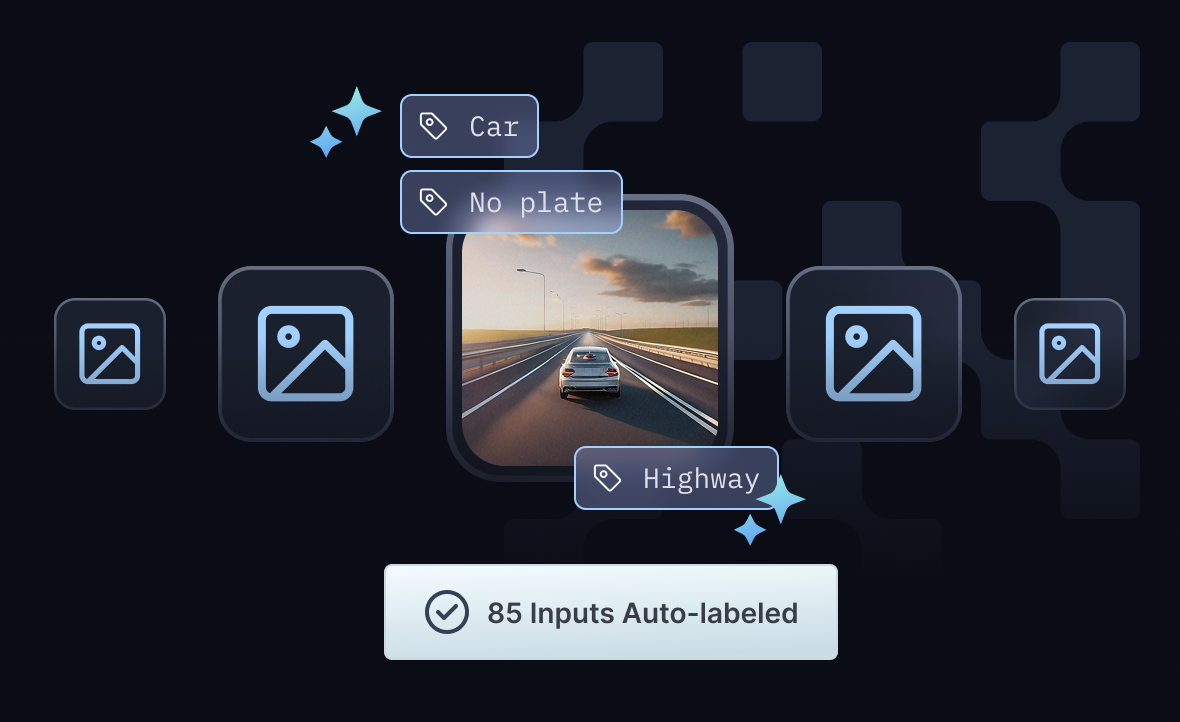
Automate data labeling with AI models and human review
Data is growing rapidly, while the human capacity is fixed or barely growing. Labeling datasets manually is resource-intensive and requires significant investment in annotators. Yet, as humans, we are error-prone and long, repetitive tasks lead to errors. Manual labeling often takes weeks or months, making it slow to scale and create large datasets.
AI-assisted labeling tools decrease label creation time by 75% while auto annotation helps you cut human costs by 50%. Auto annotation workflows combined with unsupervised or semi supervised data engines speed model development by up to 100x. Manage large datasets with fully integrated vector search, and an enterprise-grade AI platform.
cycle time improvement
lower human costs or more
scale to larger datasets
Build AI datasets with confidence
Clarifai was built to simplify how developers and teams create, share, and run AI at scale.
Ingest individual inputs or archives
Auto label as you ingest data with customizable ontologies. Complete support for imagery, video and text formats.
Index your inputs for search
Auto-index your input data using customizable embedding vectors for semantic similarity search and easier dataset management.
Manage datasets for labeling
Create, version and manage your datasets for data labeling, model training and evaluation. Export your data via SDK.
Faster supervised labeling with AI Assist
Standardize across popular models and frameworks to foster collaborate and innovate
Resource Monitoring
Automate your data labeling
Automated labeling with AI models including uploaded or custom-trained to your task
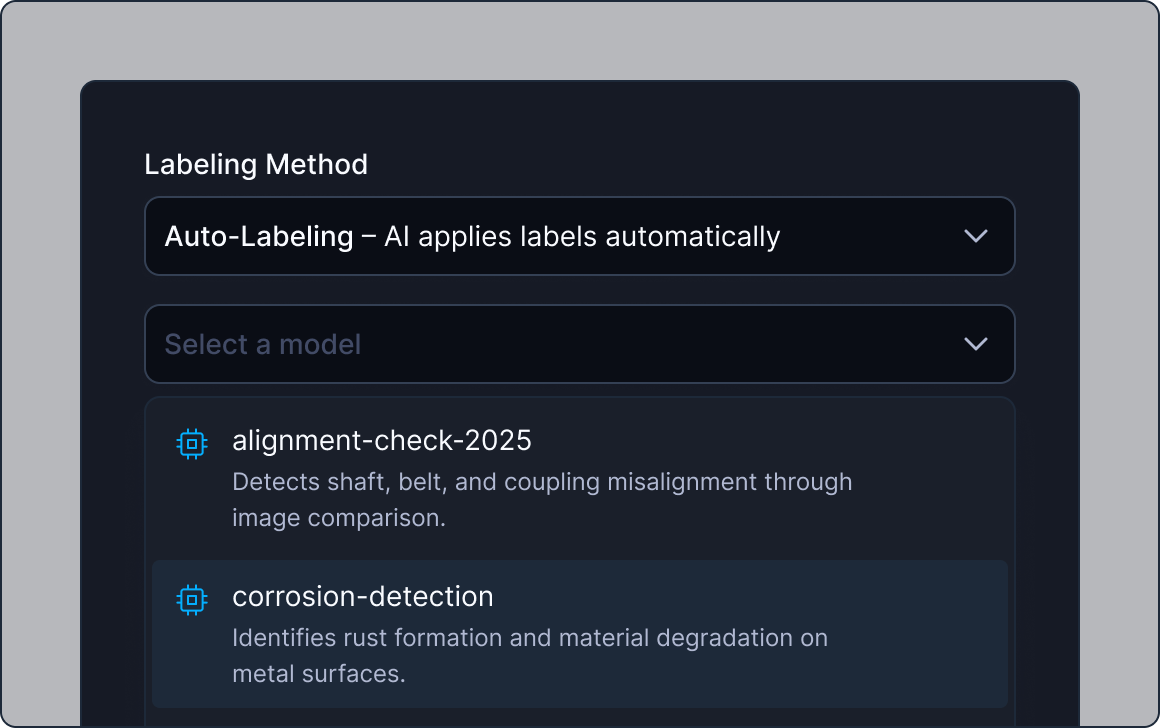
Complexity
One-click custom model training
Standardize across popular models and frameworks to foster collaborate and innovate
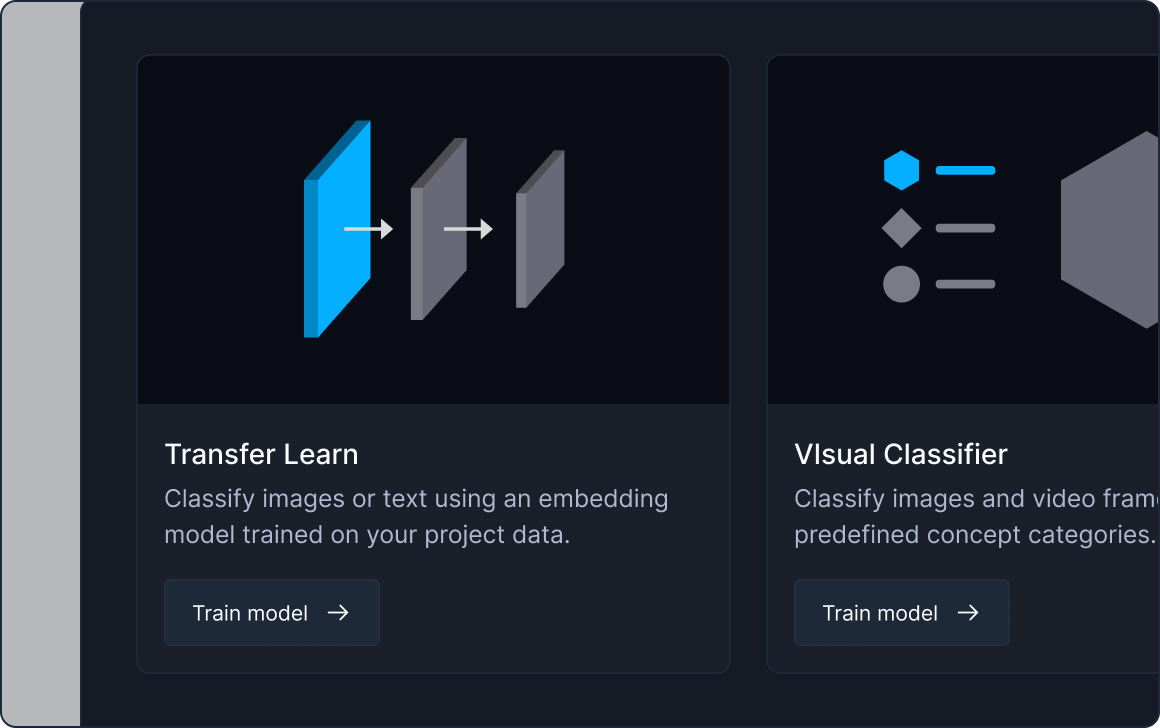
Complexity
Powerful semi-supervised auto annotation
Standardize across popular models and frameworks to foster collaborate and innovate
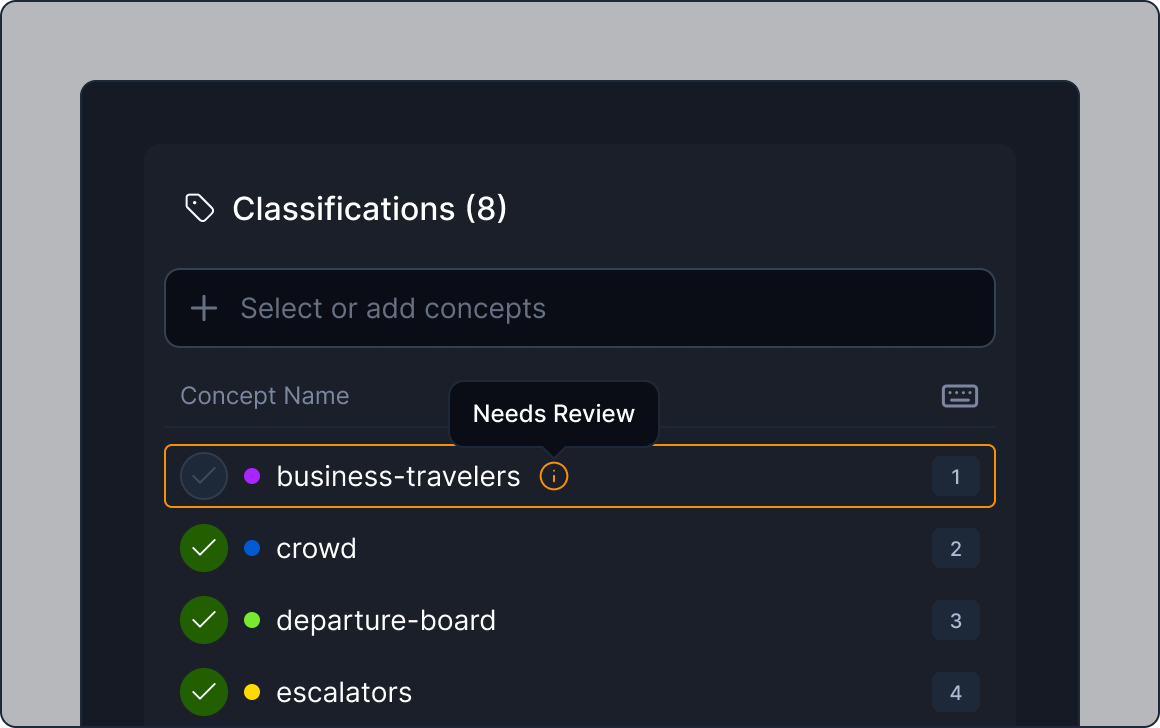
Complexity
Support advanced hierarchical ontologies
Customizable labeling ontologies, including advanced hierarchical ontologies for complex use cases.
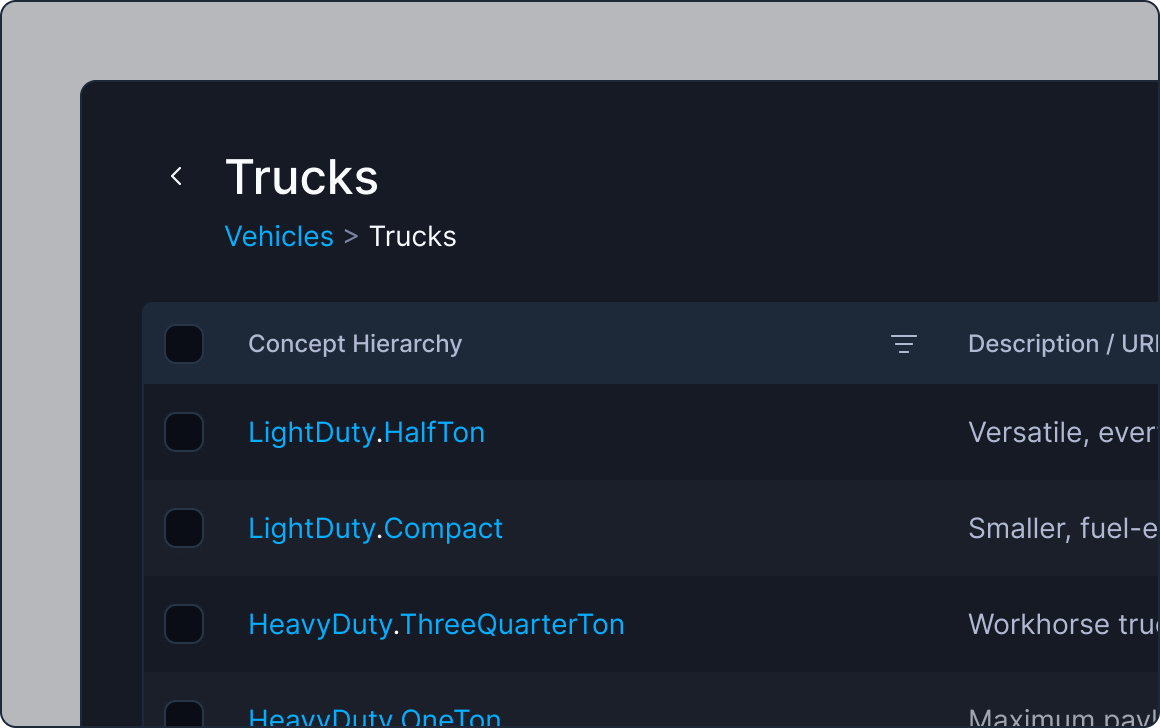
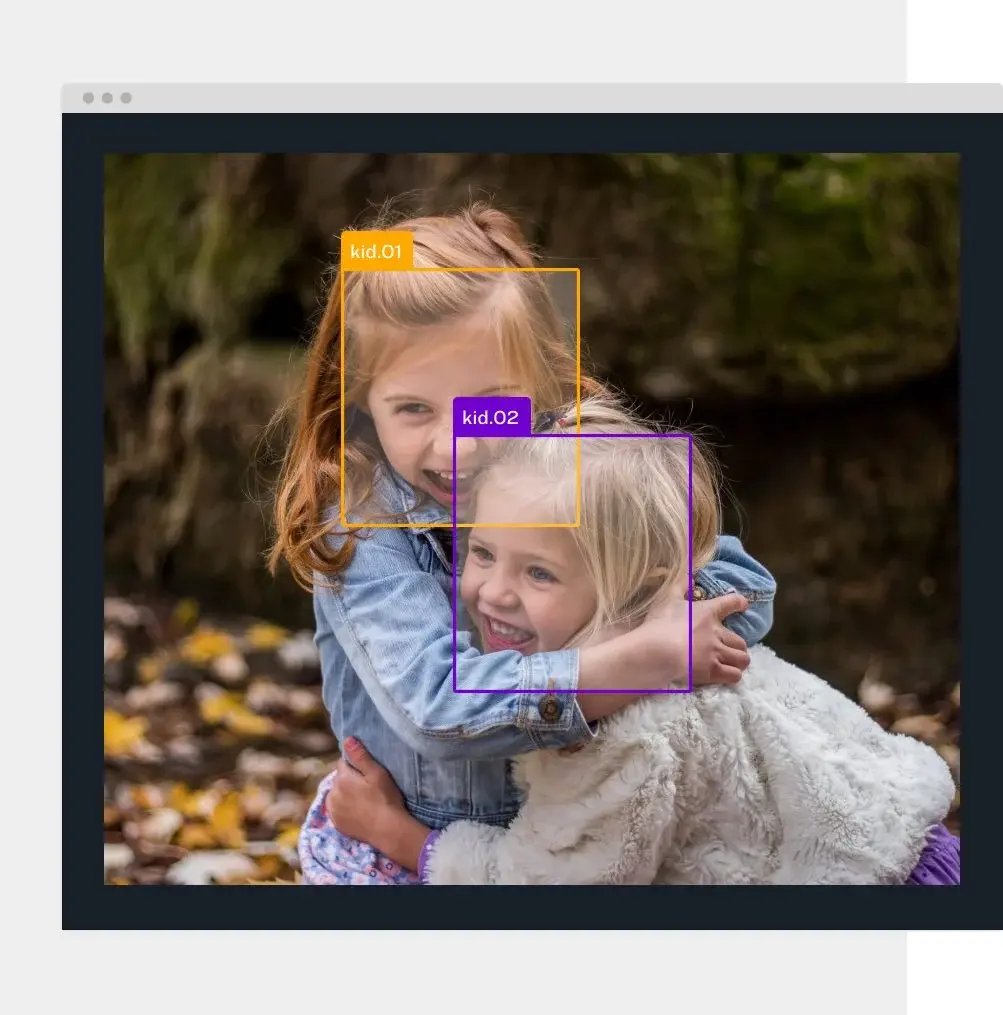
Reduction in per-label time for humans
“AI Assist and Auto Annotation helped us accelerate our model development using the same techniques that the best Silicon Valley companies are using.”
Supported Types
Data labeling types
Assign a single, specific label to an image or text input.
Associate an image or text input with multiple labels simultaneously to build robust models that accurately classify inputs with multiple labels.
Localize and identify objects within an image by labeling 2d bounding boxes. Object detection models power many computer vision applications that rely on precise localization and classification of objects within images.
Polygon labels are used in computer vision to provide precise pixel-level annotations of objects within images. Power custom semantic and instance segmentation models.
Annotate objects or regions of interest within a video sequence over multiple frames. Follow objects across frames using AI-powered tracks.
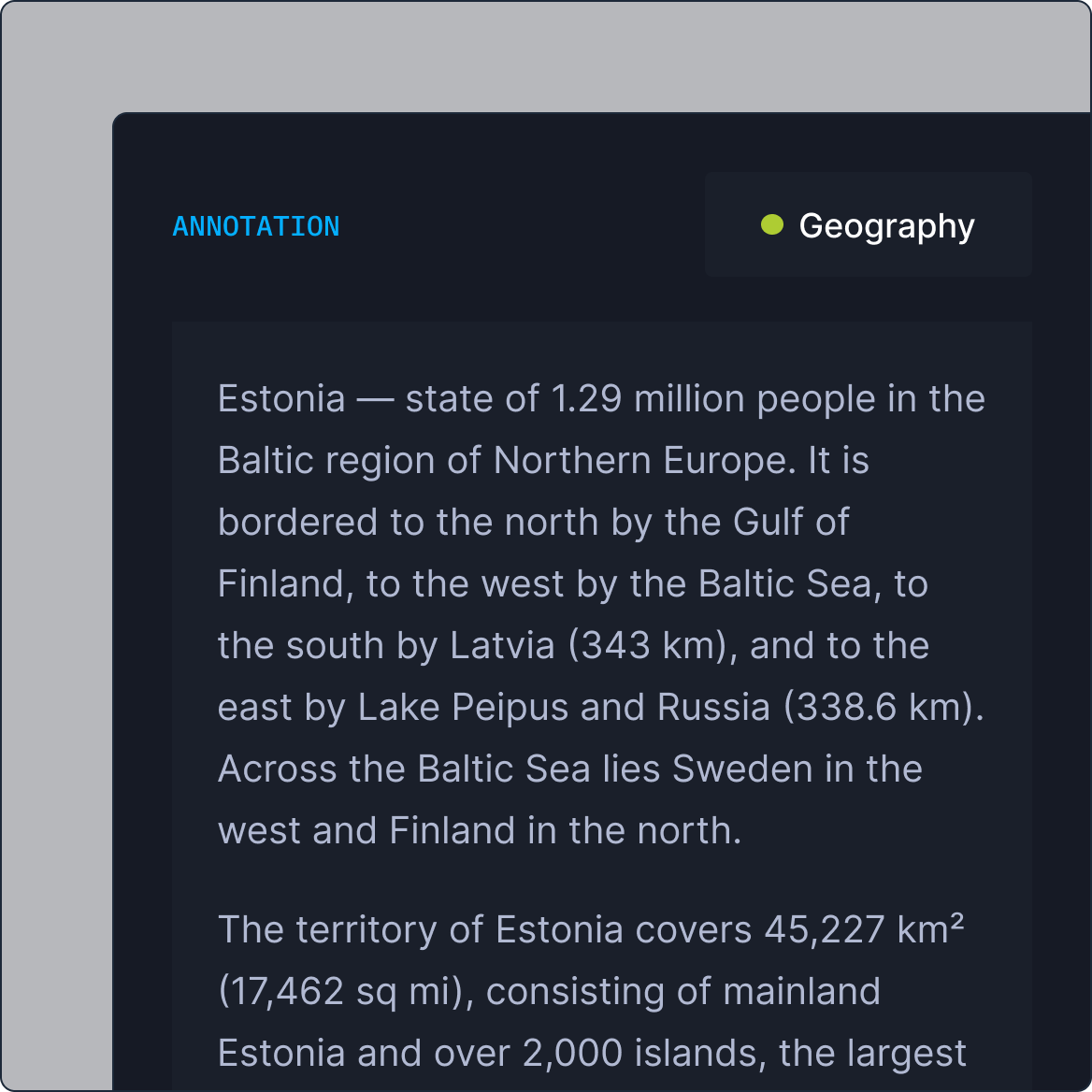
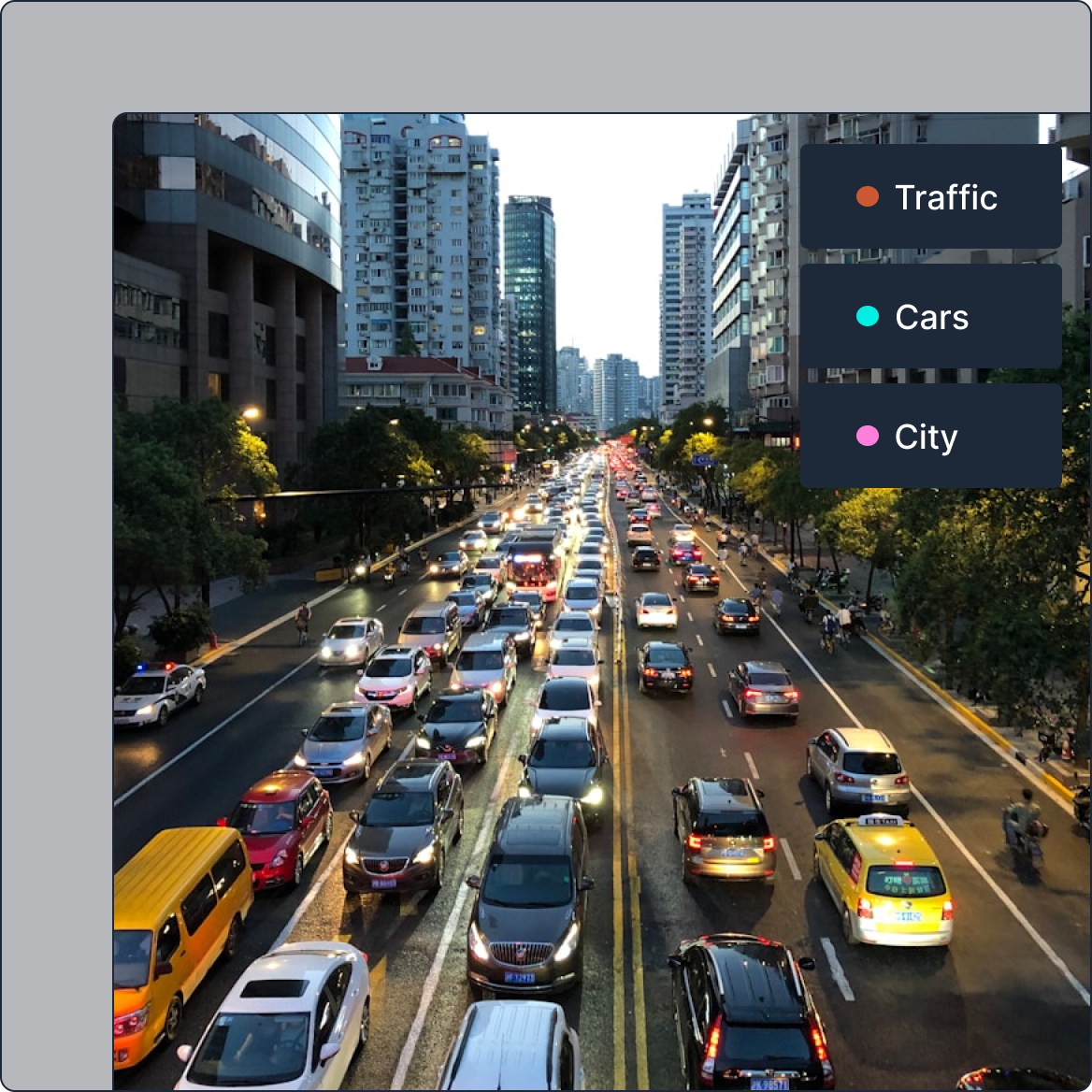
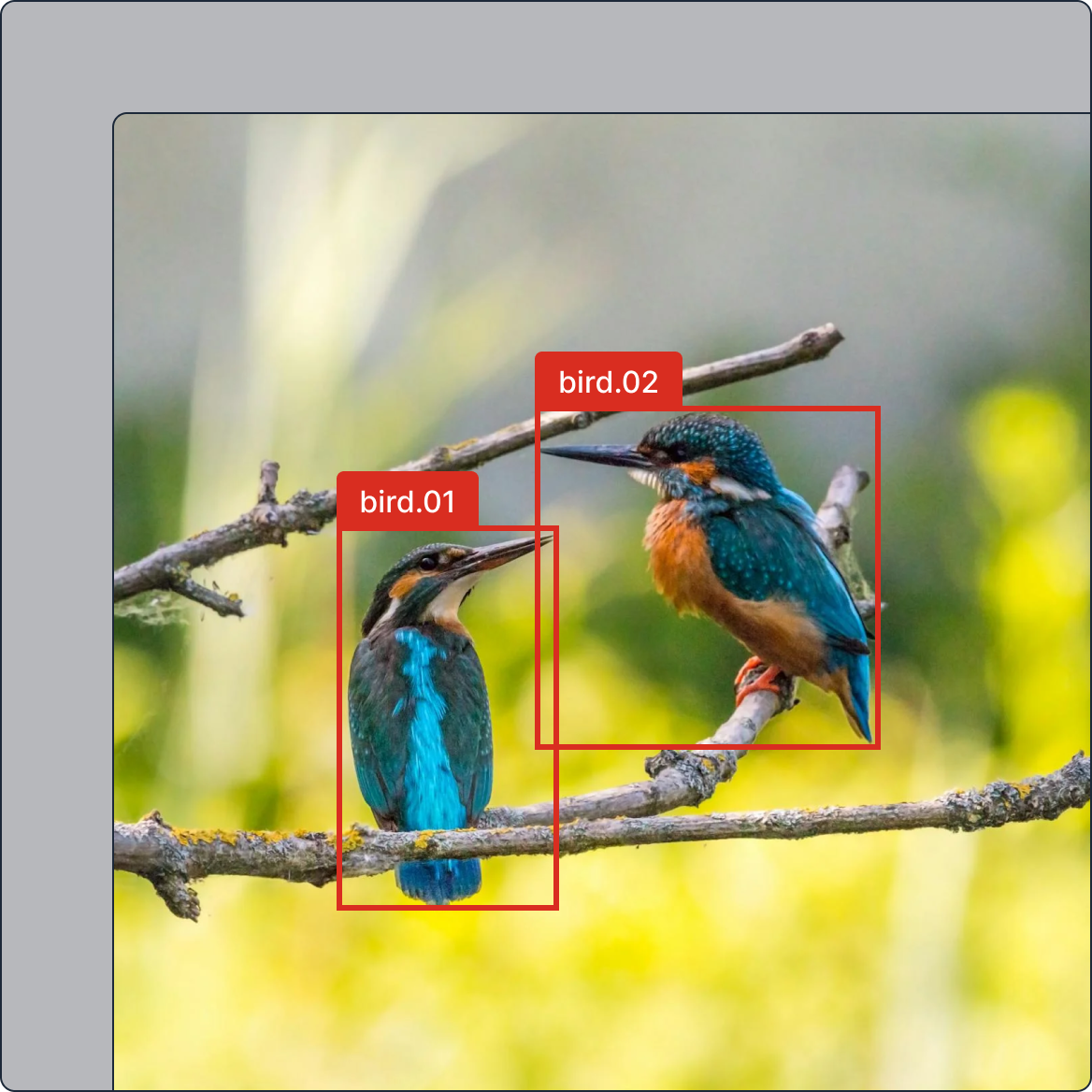
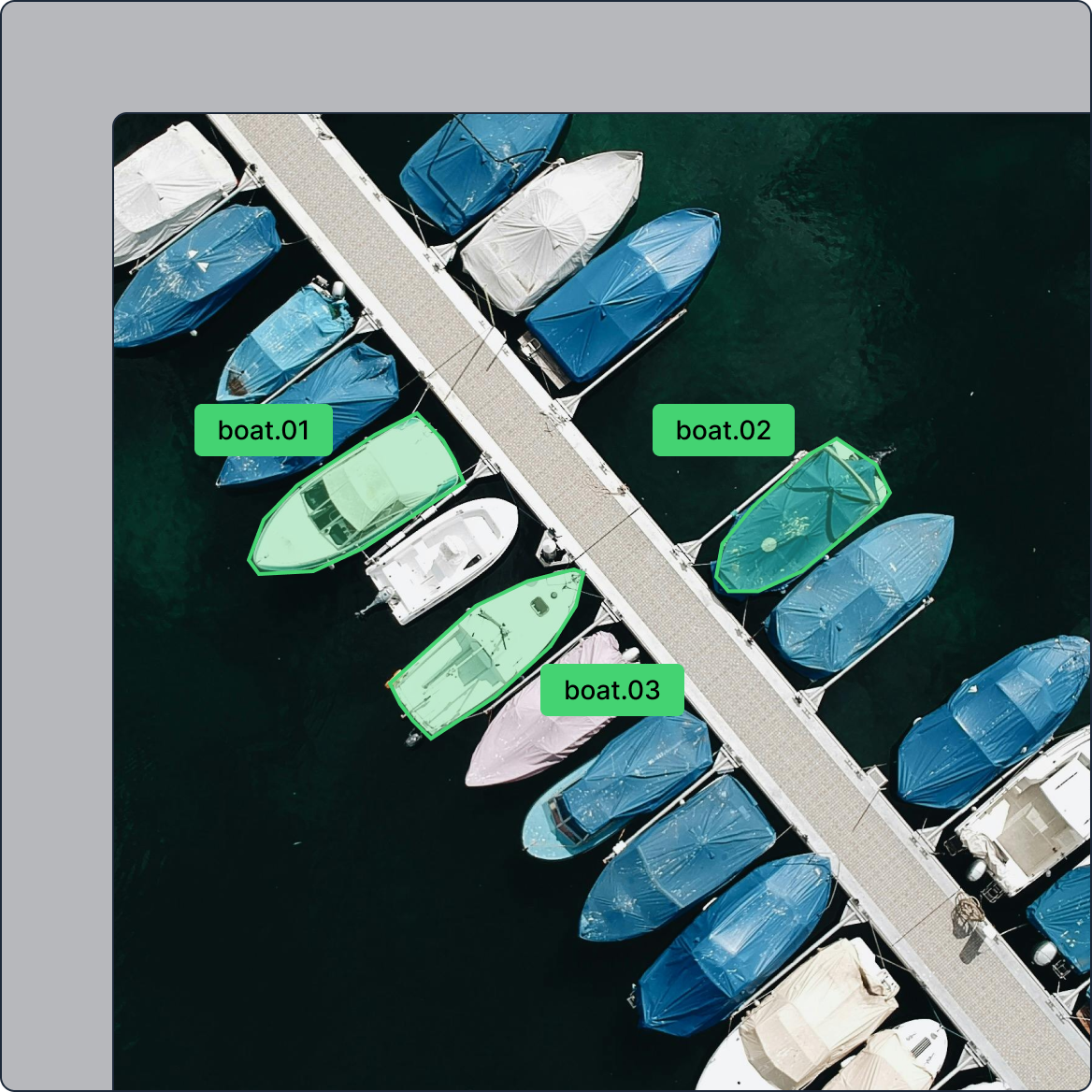
Integrate with your existing AI stack
Scale your AI with confidence
Clarifai was built to simplify how developers and
teams create, share, and run AI at scale
Establish an AI Operating Model and get out of prototype and into production
Build a RAG system in 4 lines of code
Make sense of the jargon around Generative AI with our glossary
Build your next AI app, test and tune popular LLMs models, and much more.

